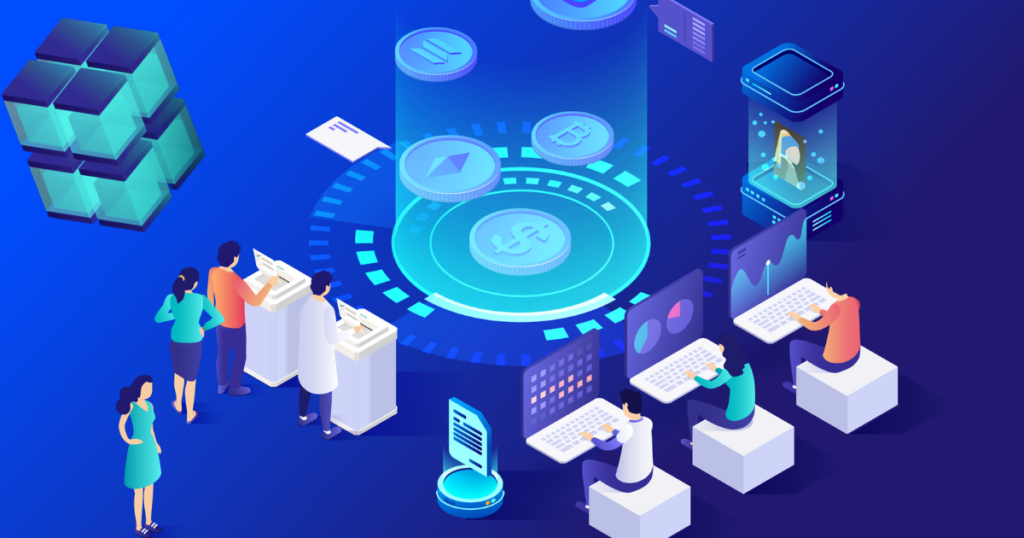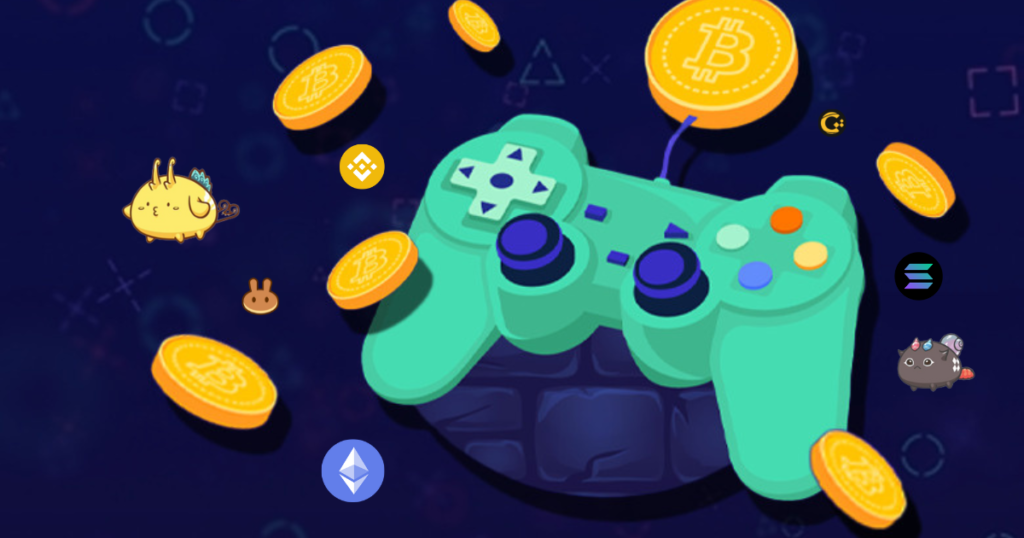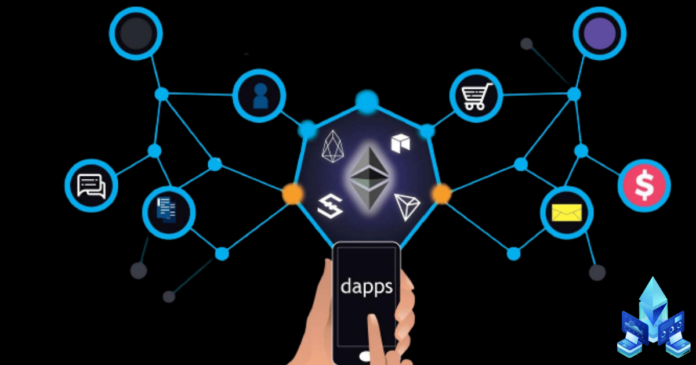Since the inception of bitcoin over a decade ago, blockchains have evolved to enable a plethora of new capabilities and use cases beyond cash. Building decentralized applications or DApps to use blockchain technology to improve many established sectors and services is one of these new options.
In this article, we’re going to learn about decentralized applications or DApps, what they do, what the different types are, how they work, the benefits and risks, and my personal thoughts on them.
What are DApps?
Decentralized applications or DApps are software that runs on blockchain networks. Dapps with various use cases such as gaming, financial, social media, and others abound. Although DApps may appear comparable to ordinary mobile apps on your phone their backend systems are distinct. To function, Dapps rely on smart contracts on a distributed network rather than a centralized infrastructure. It increases their transparency, decentralization, and resistance to attacks, but also poses new obstacles.
Decentralized applications or DApps are digital applications or programs powered by smart contracts that run on blockchains rather than centralized servers. They can resemble conventional mobile apps on your smartphone and provide a wide range of similar services and features ranging from gaming to finance to social media and more. Dapps as the name implies run on a decentralized peer-to-peer network. According to one early report Dapps contain the following characteristics.

Open Source
They are open source, Dapp’s source code is open to the public meaning anyone can verify, use, copy and edit them. There is no single entity that controls the majority of their currency or tokens. Users can also propose and vote on dap modifications. They are cryptographically secure and decentralized. To ensure data security all DApp data is cryptographically encrypted and kept on public decentralized blockchains maintained by different users or nodes. They have a tokenized system consisting of cryptographic tokens that are required to access the Dapps.
They can use cryptocurrencies like eth or create a native coin with a consensus algorithm like proof of work or proof of stake. The token can also recognize and reward contributors like miners and Stakers. According to this comprehensive definition, the bitcoin blockchain is Daap probably the first Daap ever. It’s open source with all data stored on a decentralized blockchain a cryptocurrency with a proof-of-work consensus method. The same is true for other blockchains that contain the aforementioned features. However the word DApps now commonly applies to any application with smart contract functionality that runs on blockchain networks, because the bitcoin blockchain does not support smart contracts most people today would not classify it as a DAap.
Most Dapps still exist on the Ethereum network. It provides a solid foundation for dap developers to expand existing use cases. However, as DApps mature developers have begun to construct them on other blockchains such as BnB, Solana, polygon, avalanche, eos, and more.
How Does Dapps work?
Dapps are innovative contract-powered applications their back-end code is dispersed throughout peer-to-peer networks. A smart contract is made up of a set of specified rules that are enforced by computer code. All network nodes will carry out the tasks defined in the contract when and if specific circumstances are met. It’s challenging to update or destroy an intelligent contract once it’s been implemented on the blockchain. As a result, even if the Dapps development team has disbanded users can continue to access the DApp.
DApps Advantages
While the interfaces of DApps and traditional programs may appear identical Dapps have numerous advantages over their centralized counterparts. Data is stored on centralized servers by web apps. A single compromise server can bring the app’s entire network down rendering it temporarily or permanently inoperable. Data leaks or theft may occur in centralized systems placing companies and individual users in danger. Dapps on the other hand are based on distributed networks with no centralized authority.
Dapps are less vulnerable to assaults since there’s no single point of failure making it very difficult for hostile actors to hijack the network. The p2p network can also ensure that DApps keep running with little downtime even if individual machines or network parts fail because Dapps are decentralized users have more control over the information they share. Users need not provide real-world identities to interact with adapt because no companies own their data. Instead, they can connect to DApps using a crypto wallet and entirely manage the information they provide.
Another benefit of DApps is that developers can easily incorporate cryptocurrency into their core operations by utilizing innovative contracts. Dapps on Ethereum for example can accept eth as payment without integrating with third-party payment services.
Dapp restrictions
Dapps have the potential to play a significant role in a censorship-free future, but every coin has two sides. Decentralized applications are still in their infancy and the industry is yet to address issues such as scalability, code revisions, and a small user base. Dapps require a substantial amount of computer power to function which may cause network overload. To accomplish the security, integrity, transparency, and reliability that Ethereum seeks for example each validator must run and store every transaction executed on the network. This could reduce the system’s transaction per second or fps rate, causing network congestion and higher gas prices. making changes to a DAap is equally tricky.
A Dapp will require continual updates to repair problems, update the user interface and introduce new functions to improve the user experience and security. However, once a DApp has been published on the blockchain it’s difficult to change its back-end code. Most of the network’s nodes would need to approve any updates or upgrades which may take a long time to implement. The multitude of DApps on the market makes it tough to stand out and attract many users. A network effect is required to adapt to function well. The more users adopt has the more effective it is at providing services. A more extensive user base can also help to secure the Daap and keep hackers from tampering with the open source code.
Popular DApp applications
Dapps provide a novel way for businesses in various industries to reach a larger audience. GameFi, Decentralized finance or Defi, entertainment, and governance are some common DApp use cases.
GameFi

GameFi Dapps are becoming increasingly popular as evidenced by the emergence of Axie Infinity, a play-to-earn game on the Ethereum blockchain. According to DApp radar blockchain gaming activity increased two thousand percent from 2021 to 2022 quarter one. It also drew 1.22 million unique active wallets or uaws in march 2022 with gaming DApps accounting for more than half of the activity.
Unlike traditional video games, most gaming apps give users complete control over their in-game assets. They also allow gamers to commercialize these products outside of the game. Axie Infinity, for example, has NFT-based game characters virtual territory and gaming gear, players can keep them in crypto wallets move them to other Ethereum addresses, or trade them on NFT marketplaces with other players.
Players in the ecosystem can compete to gather erc20 tokens that can be switched on exchanges. The longer they play the more in-game incentives they can obtain.
Related: What is GameFi? Play-to-Earn (P2E) Blockchain Games Explained
Defi and DEXs
Financial institutions serve as middlemen in traditional finance. Everyone can use financial services without a central authority and keep complete control over their assets by using Dapps. Defi can also help low-income people by providing them access to a wide range of financial services at much cheaper rates. Borrowing and lending are decentralized applications most common types of financial services. Defi Dapps provide quick transaction settlement, low to no credit checks, and the use of digital assets as collateral.
DAap lending markets provide users with more incredible options, for example, lenders have more control over their loans since they may choose which coin to lend on which platform. Because there are no middleman expenses users can potentially earn 100 of the interest generated by the loan.
Another important example of financial DApps is Decentralized exchanges or Dexs. By eliminating intermediaries such as centralized cryptocurrency exchanges such systems allow peer-to-peer trading. Users are not required to give up control of their funds, instead of transferring their assets to exchange people utilize smart contracts to trade with other users directly. Orders are carried out on a chain and directly between user’s wallets. Dexs often offer lower trading fees than centralized exchanges because they require less maintenance uni swap, sushi swap, and pancake swap are among the most popular Dexs.
Entertainment
Our lives are not complete without entertainment. Dapps transform people’s everyday activities into digital experiences that can offer economic incentives. AUDIOS a blockchain-based decentralized music streaming network eliminates intermediaries in the traditional music industry connecting artists and fans directly. It enables music curators to monetize their content better while creating immutable blockchain records of their efforts. Dapps are also addressing challenges that users of social networking platforms experience. Centralized social media platforms such as Twitter and Facebook are frequently chastised for suppressing postings and abusing user data. The community can engage freely and express their thoughts with fewer constraints and censorship thanks to decentralized social DApps like Steemit and have more control over their personal information.
Governance
By establishing a more community-centric decision-making mechanism Dapps can empower users to play a more significant part in them in the administration of online organizations. Users who own governance tokens for a specific blockchain project can use intelligent contracts to create proposals for the community and anonymously vote on others’ ideas. Decentralized autonomous organizations are one of the decentralized governance models also known as DAOs.
DAOs are fully independent DApps that employ smart contracts to make decisions without the need for a central authority. There’s no hierarchy among them instead economic mechanisms link the organization’s interests with those of the individual DAo members.
Conclusion
What are my thoughts? Dapps extend the capabilities of the web by incorporating blockchain technology into traditional applications. In the future, decentralized applications may offer even more novel use cases to the market. According to Dapp Radar Dapps had about 2.4 million daily active users by quarter 1 of 2022 and user interest is predicted to expand steadily. However, before mainstream adoption DApp developers and the blockchain networks on which they are built must address the current constraints. As always I hope you got value from this article, so I’m curious what did you learn about Dapps leave a comment below.

